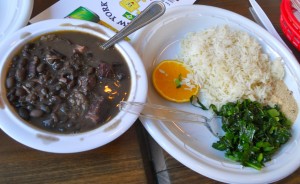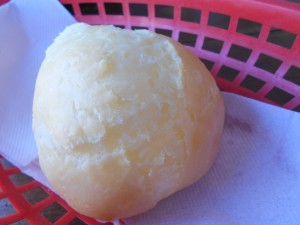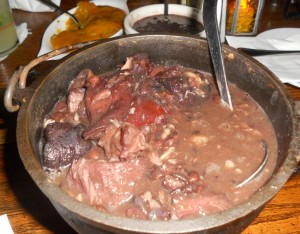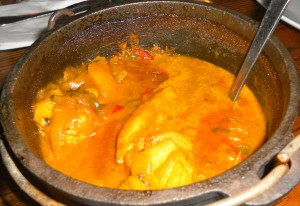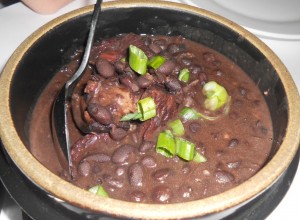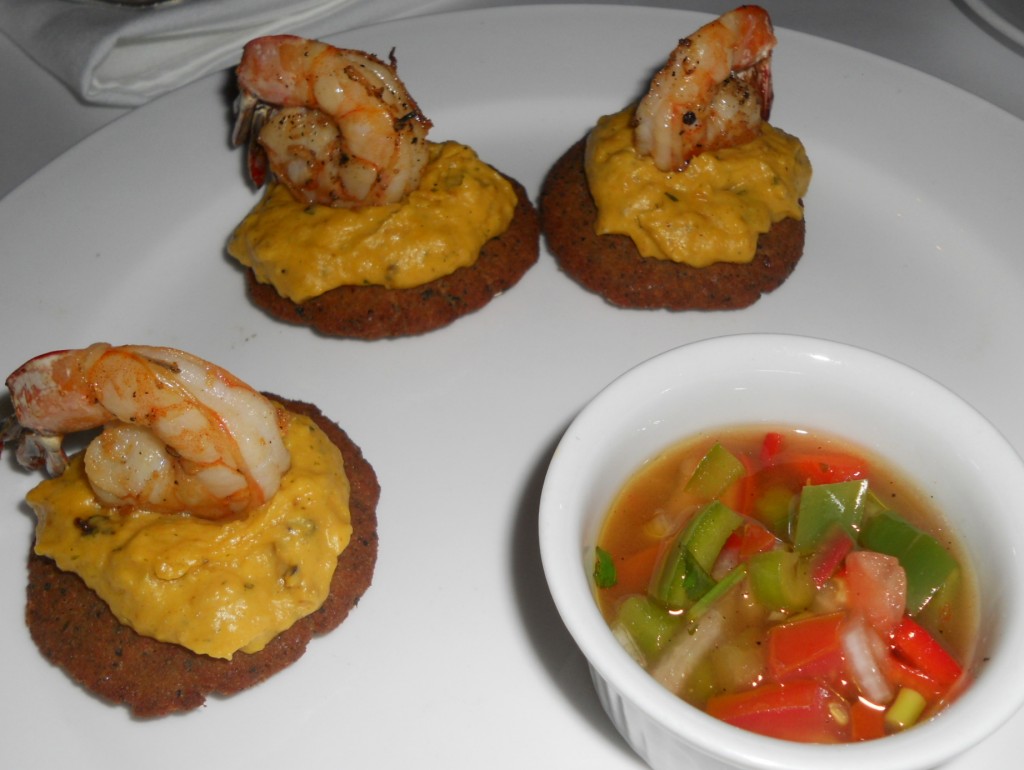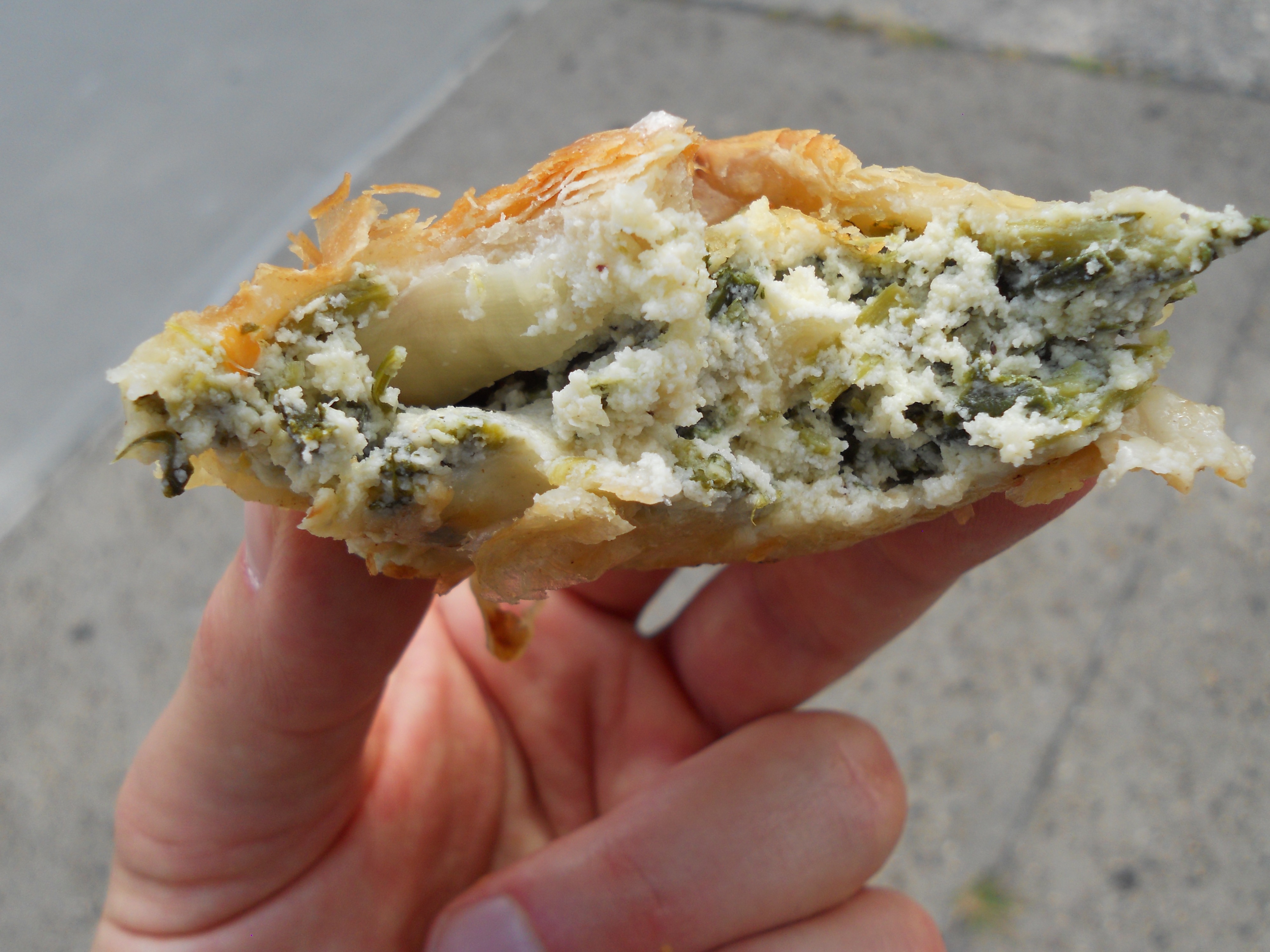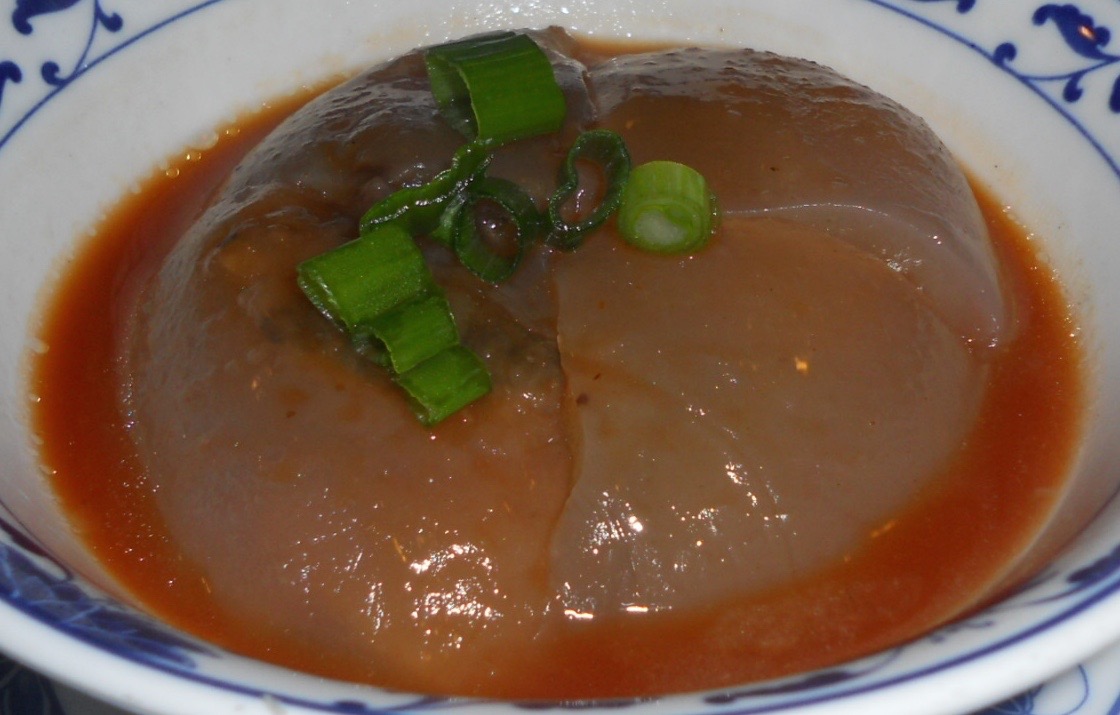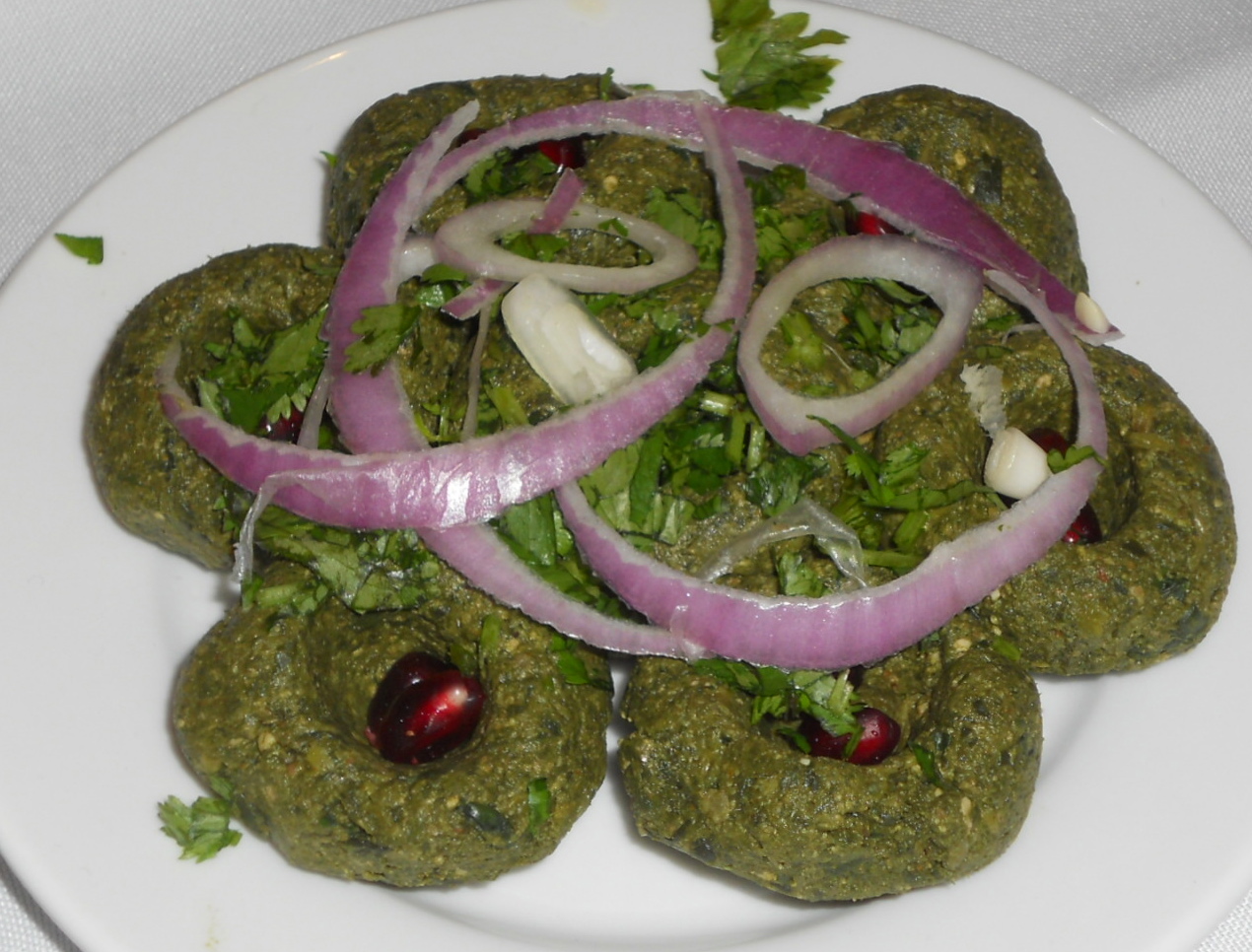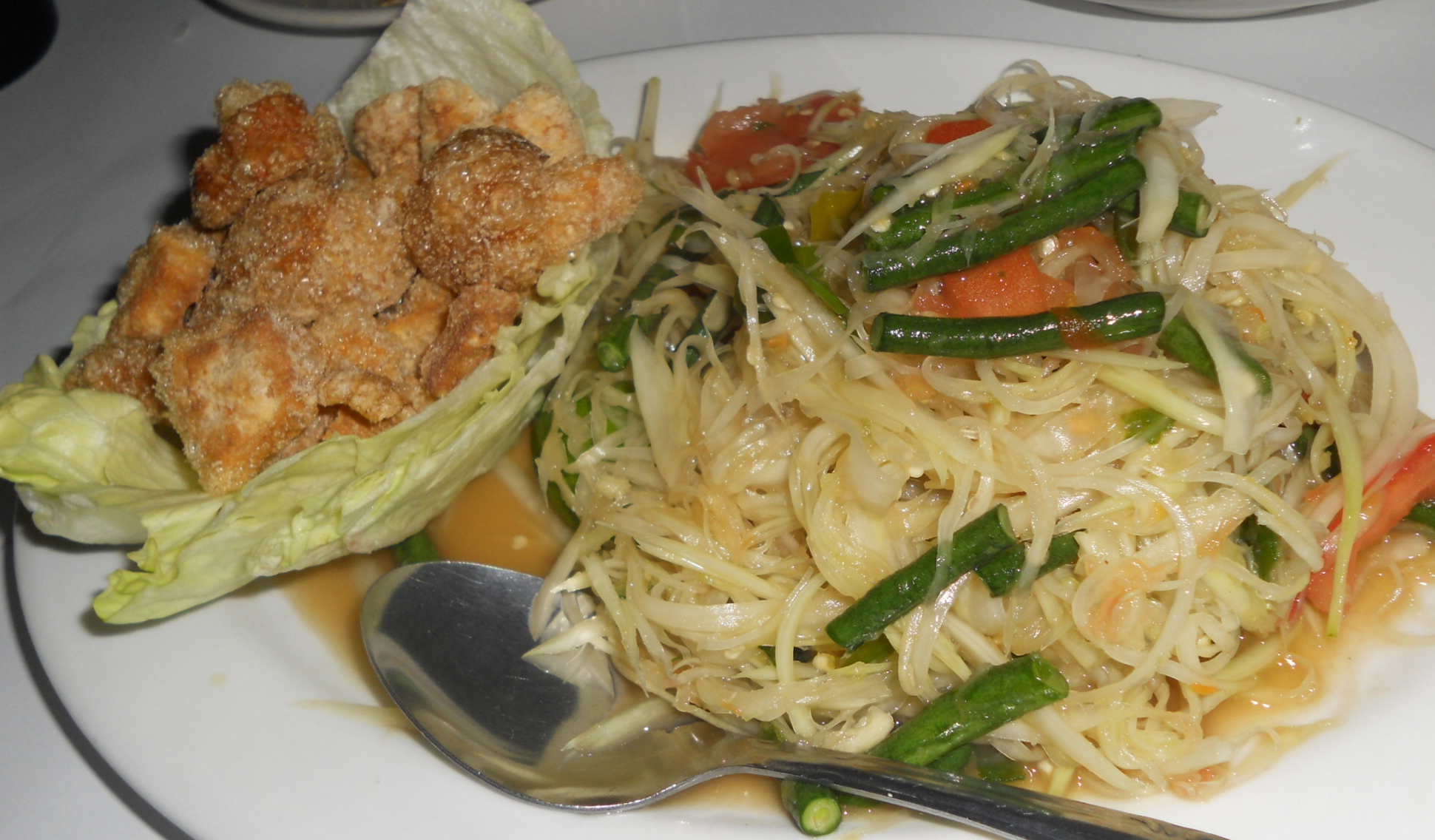Full disclosure: I f*cking love Brazil. I’ve spent a total of about four months there, and have fallen in love with Brazil—and in Brazil—over and over again.
So it’s really hard for me to be reasonable about Brazilian food. I’ve had some mind-blowingly great meals all over Brazil—especially in the northeastern corner of the country—and it’s hard not to envision sexy tropical food whenever I walk into a Brazilian restaurant… even though New York City restaurants aren’t at all tropical and sexy.
In an effort to compensate for NYC’s lack of tropical sexiness, I decided that it would be a good idea to eat Brazil’s national dish, feijoada—and anything else in our path—in three different Brazilian restaurants in a single afternoon. You know, to help us comprehend Brazil’s culinary diversity. Or maybe just to help us contract a spectacular disease known as bigfatfuckitis. You decide.
Either way, I might be totally mean to NYC Brazilian restaurants that can never be quite as sexy and tropical as the real thing. Consider yourself warned.
We selected three Brazilian restaurants in Astoria that serve Brazil’s national dish, feijoada, which is a thick stew made from black beans and pork sausage, served with sides of rice, collard greens, and farofa (toasted cassava flour). Our first stop, Pao de Queijo (Portuguese for “cheese bread”), is a laid-back quick-service spot that serves Brazilian juices (including untranslatable treats like cupuacu, acai, and acerola) for $4, Brazilian sandwiches for as little as $3.50, and eponymous chunks of cheese bread for $1.75.
Like the restaurant itself, Pao de Queijo’s feijoada is pretty informal stuff, served in a plastic bowl, accompanied by rice and greens and farofa plopped on a plastic plate. You could argue with the presentation, but the feijoada was perfectly solid, with just enough spicy sausage to give the stew a nice bite. And it was pleasantly gentle on the wallet ($9), just like everything else at Pao de Queijo.
During our second stop, we moved way upscale to Favela Grill, a shiny restaurant in the opposite corner of Astoria. They have miniature clothespins on the napkins and very fancy-looking menus mounted on wooden boards. It’s all totally unnecessary, and I could hear my wallet wailing for mercy as soon as we walked in the door.
Unsurprisingly, the feijoada at Favela Grill cost more than twice as much as the stuff at Pao de Queijo. It was served in a fancy, miniaturized cast-iron pot, and the stew definitely had more meat and a more intensely porky flavor than the feijoada we ate earlier. But it cost $21. Was the miniature clothespin and extra porkiness really worth an extra $12? I mean, I love extra porkiness. A lot. But still: ouch.
We also tried Favela Grill’s version of moqueca, a seafood stew from the northeastern state of Bahia. Moqueca is made from coconut milk, fish (or, if you’re really lucky, shark), onions, garlic, cilantro, tomatoes, hot peppers, and dende oil—which is supposedly one of the world’s most difficult-to-digest (and delicious) oils.
If I’d never eaten moqueca before, I would have thought that Favela Grill’s version was reasonably impressive—basically, it was a semi-castrated Thai fish curry, but without the curry spices. Not bad. But compared to the moqueca that I ate in Bahia years ago, it was an abject and expensive failure. I still enjoyed it, but the price ($20) made me want to drink several caipirinhas in a row. So I did.
I don’t know if the Brazilian food was getting tastier or if we were just getting drunker, but the feijoada at our third stop definitely tasted the best. We went to another unnecessarily classy Astorian-Brazilian place called Malagueta, named after a vicious little hot pepper grown in Brazil and Mozambique. Malagueta’s feijoada ($20) featured a particularly crumbly, flavorful sausage, and the resulting stew was blissfully salty and porky. And I like things that are salty and porky. Like my belly when I sweat.
But despite the tasty feijoada and incredibly attentive service, I still felt like something was missing. Besides the fact lots of money was suddenly missing from our wallets, some tropical spunk seemed to be missing from our food. We tried Malagueta’s rendition of acaraje (blackeyed pea fritters, traditionally fried in dende oil and slathered with spicy shrimp paste), which is normally fiery enough to burn a hole through tourists’ unsuspecting gullets and make white American boys cry like little girls. But at Malagueta, acaraje is a disturbingly refined, bland appetizer. I don’t get it.
I may never understand why somebody would make bland, castrated acaraje, but I definitely understand why somebody would eat craploads of feijoada and drink tons of caipirinhas. Astoria definitely isn’t as sexy and tropical as Brazil, but once we had enough black beans and Brazilian booze sloshing through our systems, we barely cared.

Pao de Quiejo
31-90 30th St., Astoria
Subway: Broadway (N, Q trains)

Favela Grill
3318 28th Ave., Astoria
Subway: 30th Ave. (N, Q trains)

Malagueta
2535 36th Ave., Astoria
Subway: 36th Ave. (N, Q trains)


